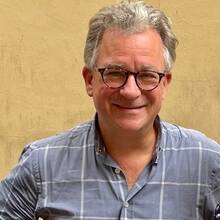Two recent addresses help to clarify Pope Benedict XVI's personal ordinariate scheme for groups of Anglicans wishing to enter into communion with Rome.
Speaking in Canada, the president of the Congregation for the Doctrine of the Faith (CDF), Cardinal William Levada, said groups of Anglicans entering into communion with the Catholic Church will not be absorbed the way "a teaspoon of sugar would be lost in a gallon of coffee", according to this CNS story. They will "provide a distinct sound within the Church, the way the different instruments in an orchestra blend in a symphony" he told a fundraising dinner.
Levada also said the ordinariates were the "logical fruit" of Anglican-Catholic dialogue: they brought about unity but without absorbing. In this way they offer a model for future corporate unity between the Anglican and Catholic Churches.
Meanwhile, the Australian bishop responsible for receiving the groups of Anglicans who have already applied to be part of the ordinariate scheme in that country has written an interesting letter (dated 13 Feb) to Anglicans considering the move.
According to Peter Elliot, an auxiliary if Melbourne, the personal ordinariates will be in some ways like an eparchy --while at the same time being part of the Latin Church.
The Ordinary of an Anglican Use Personal Ordinariate will be like an eparch, having jurisdiction and pastoral care over a series of parishes, “juridically comparable to a diocese”. But he will “teach, sanctify and govern” within the Western tradition, the Roman Rite, and that is the interesting and new development in Anglicanorum coetibus. There is also another closer similarity between the proposed Anglican Use Personal Ordinariates and Eastern Catholic eparchies. That may be described as a distinctive “ethos” based on a liturgical tradition and a wide range of customs, history, spiritualities and culture, never forgetting the personal bonds between people and families. In your case this will be the Anglican patrimony...
In full communion with the Successor of St Peter, members of each Personal Ordinariate will be gathered in distinctive communities that preserve elements of Anglican worship, spirituality and culture that are compatible with Catholic faith and morals. Members of an Ordinariate will be able to worship according to own liturgical “use”, while still being Catholics of the Roman Rite. So in the Ordinariate you will be “Roman Catholics” or “Latin Catholics”, part of the largest group in the Universal Church. At the same time, like the Eastern Rite Catholics, you will be the bearers of a distinctive and respected tradition. Your Ordinaries, bishops or priests, will work alongside bishops of the Roman Rite dioceses and the bishops of Eastern Rite eparchies and dioceses, finding their place within the Episcopal Conference in each nation or region.
Later he adds:
As Anglicanorum coetibus indicates, each Personal Ordinariate is meant to inter-relate with other Catholics of the Roman and Eastern Rites. It is not a kind of national park for a rare and endangered species. Yet I would suggest that, at the end of the day, the only significant communities with an authentic Oxford Movement tradition left on earth will be found in the Personal Ordinariates within the Catholic Church.
The distinctive "Anglican liturgical patrimony" the ordinariates will use will need to be negotiated with Rome, says Bishop Elliot. But he allows himself to speculate on one of its possible sources -- the Sarum Rite.
Considering its history and strong influence in the first editions of the Book of Common Prayer, the Sarum Rite might well be a major source. Queen Mary I published a national edition of the Sarum Missal to replace all those missals for the diocesan uses that went into the fire when the first Book of Common Prayer appeared in 1549. Therefore the Sarum Use was the last version of the Roman Rite in England before the universal Missale Romanum, Roman Missal, was authorised by St Pius V in 1570. At the end of the nineteenth century when Westminster cathedral was being built, it was proposed that the Sarum Rite be revived as the use proper to the cathedral. Nothing came of this project, lost I suspect in the cross-currents of liturgical controversies and an Ultramontane trend to standardise liturgy along Counter-Reformation lines, even down to the shape of chasubles.
Austen Ivereigh







